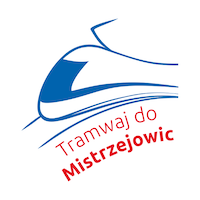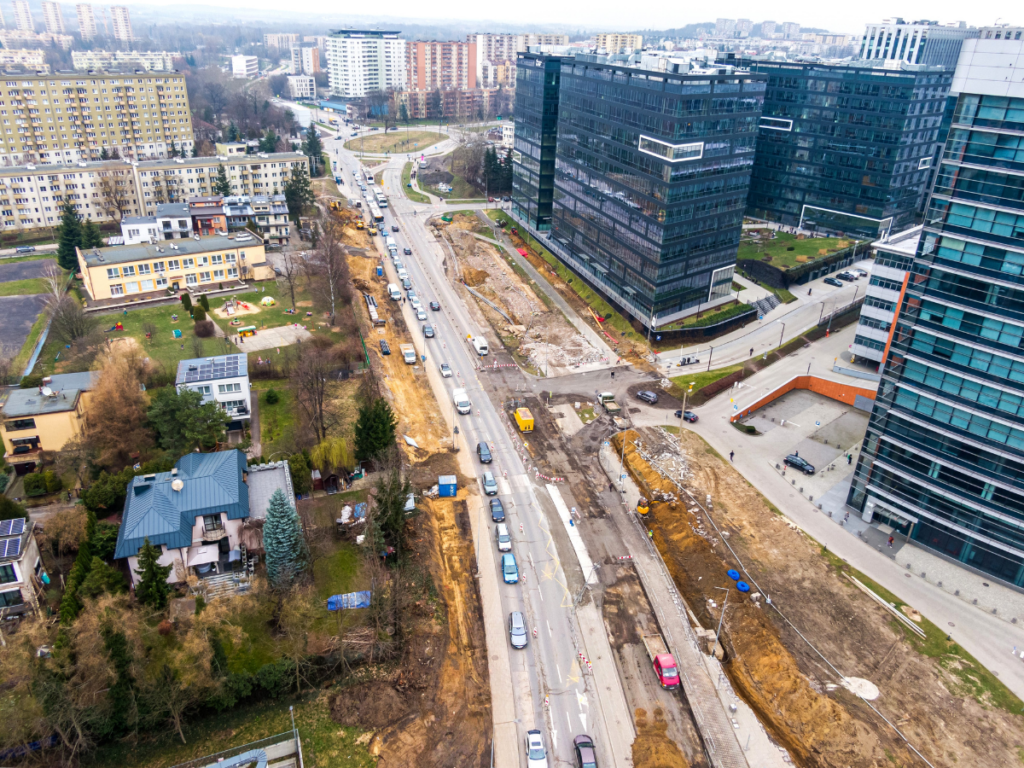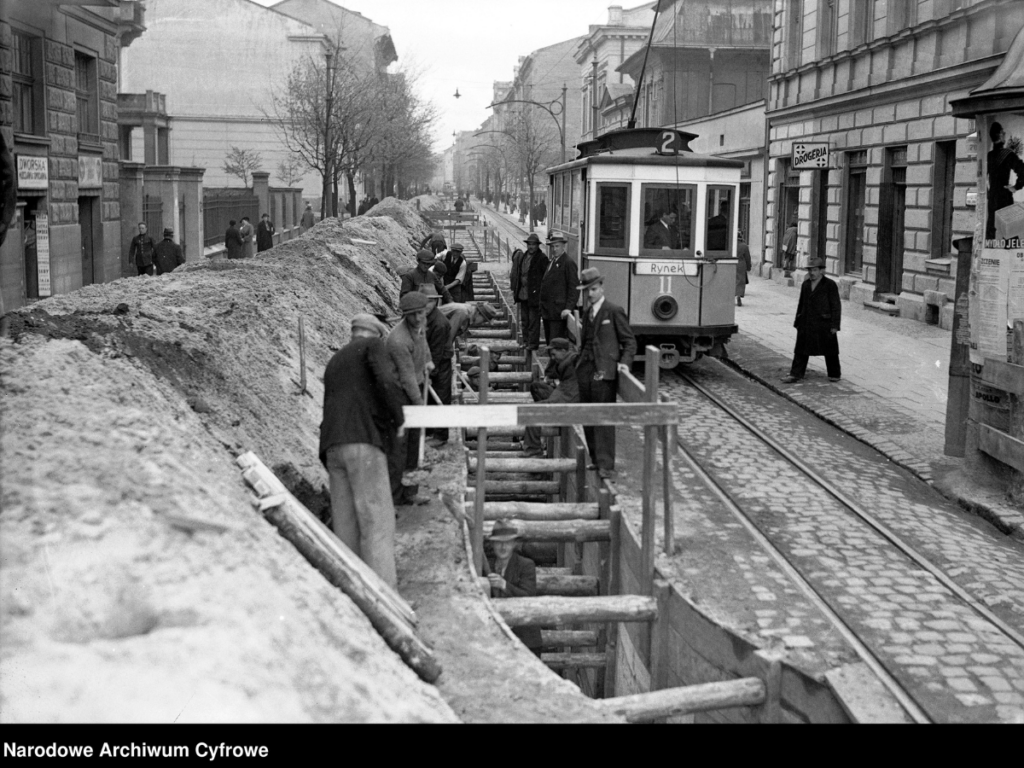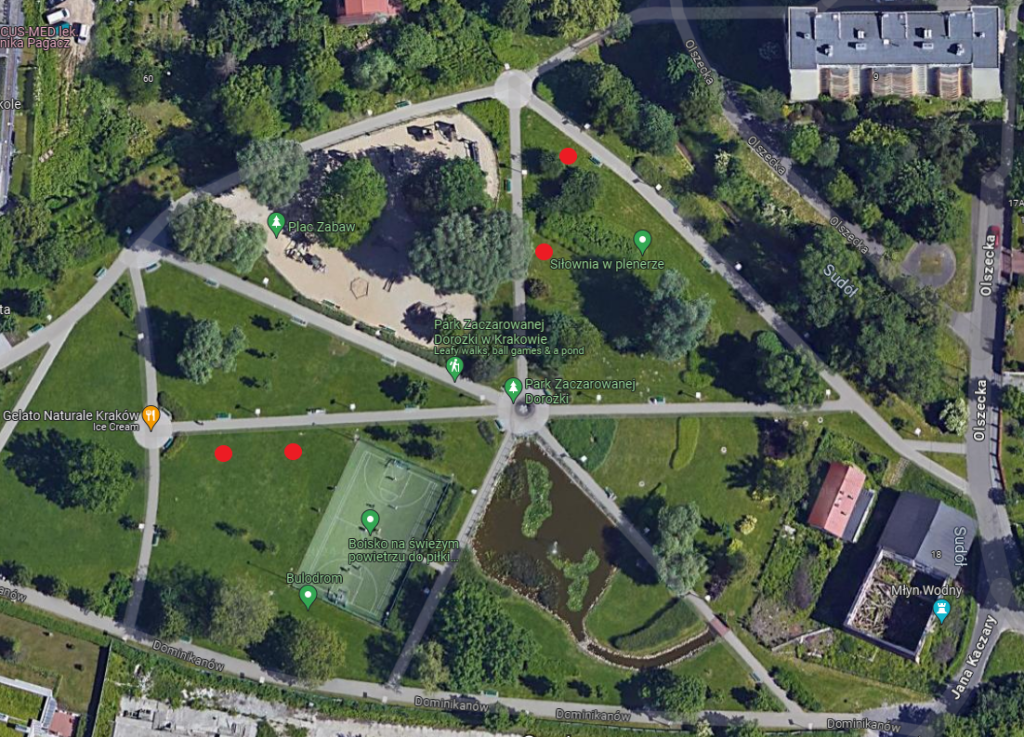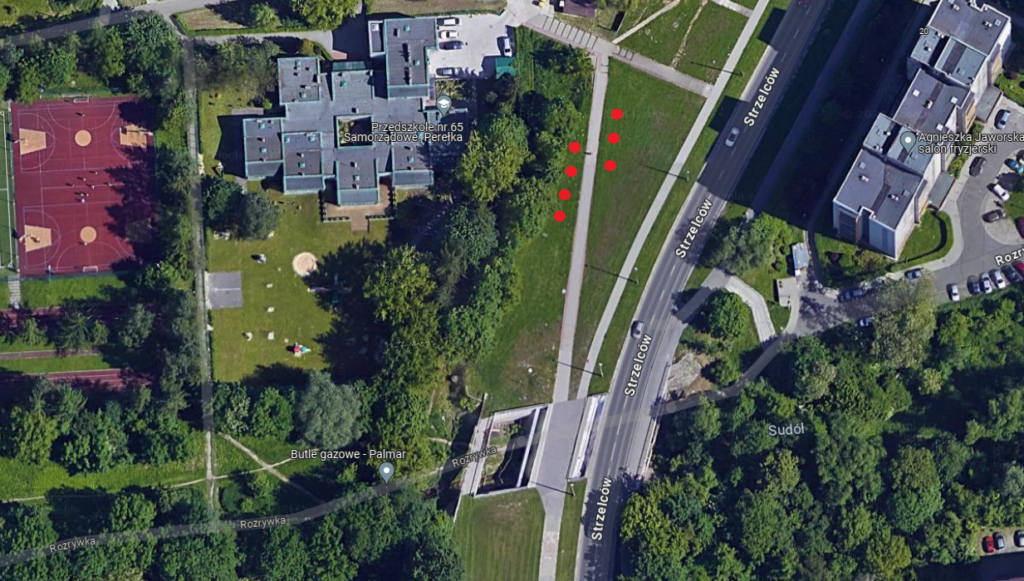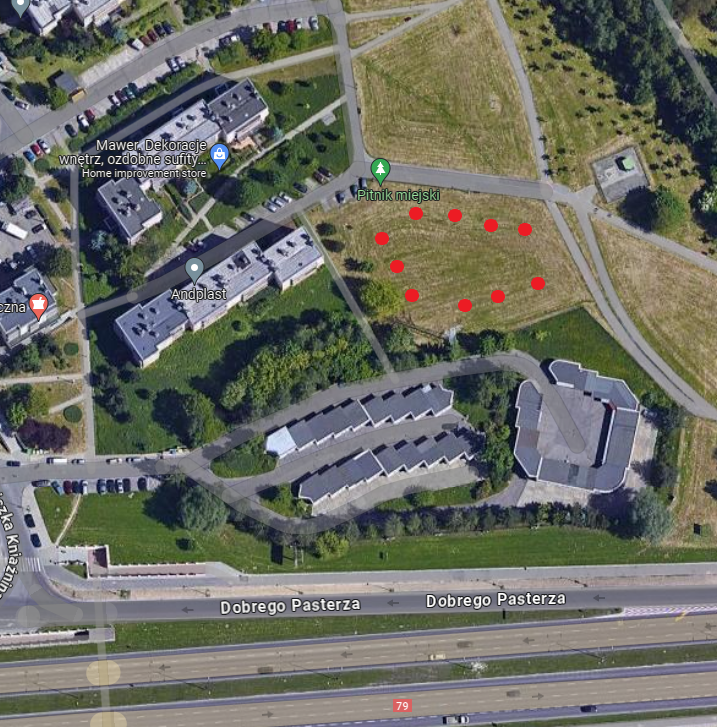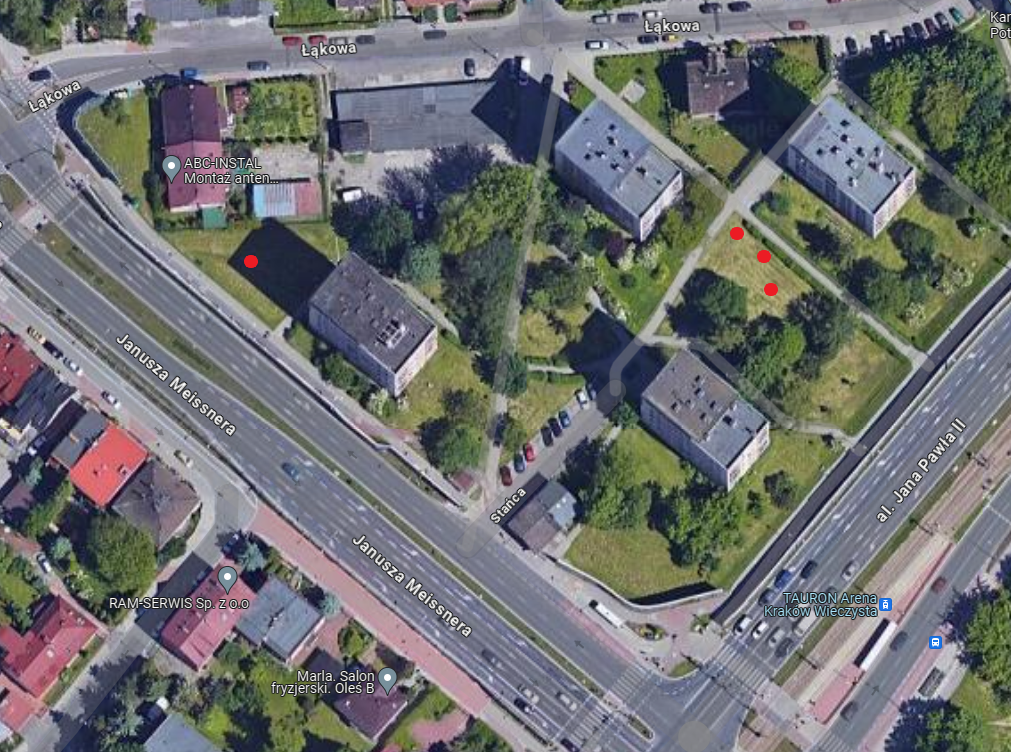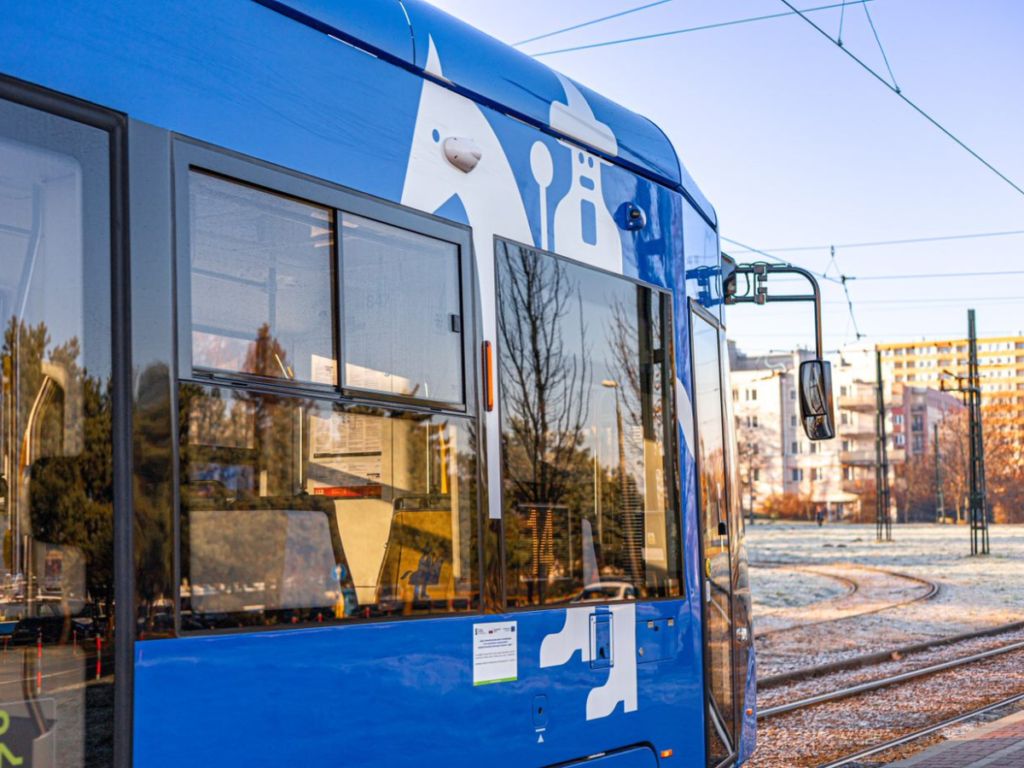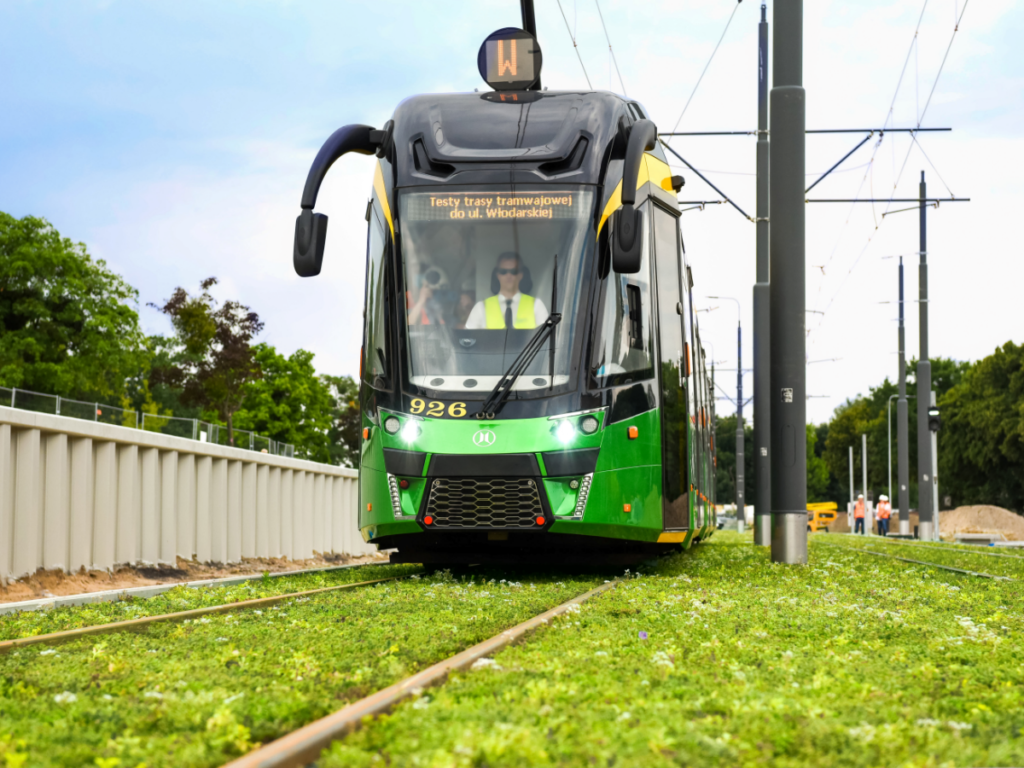This is the eighth month of work on the construction of the tram line to Mistrzejowice. What is the progress so far and what awaits us in March? We bring you the answers.
Due to the ongoing construction of the tunnel, a temporary traffic organization (COR stage 2.3) was introduced on February 24. There were closures and narrowing of roadways. On Lublańska Street, traffic between the Polsad traffic circle and the Barei traffic circle will only travel on the western roadway, where one lane for each direction has been designated. In addition, there is a temporary intersection with Lublańska Street at the level of the exit from Promienistych Street, where vehicle traffic from and to Bora-Komorowskiego Avenue is redirected. More.
Intensive work on the rebuilding of the Dominican Sudol continued throughout the month. By the end of the month we had installed 87 prefabricated elements, which give a total length of as much as 174m of new channel. More.
Three sessions of the Construction Council were held this month (January 1, 15 and 29), attended by representatives of the Private Partner and Local Government Entities, including the Councils of Districts III Prądnik Czerwony and XV Mistrzejowice, and interested residents.
At the end of February, a meeting was held with residents regarding plantings in the Lublańska Street area. Together with representatives of the Board of Urban Greenery in Krakow, we discussed the details in terms of species of trees and shrubs, their exposure and optimization of the layout that meets the needs of residents.
What will happen in March?
In the middle of the month, it is planned to implement temporary traffic organization stage 2.4. The changes will apply to Mlynska Street and move the current switch to the north. In addition, the intersection of Miechowity Street and Mlynska Street will be excluded, and access will be via a detour through Stanislaw ze Skalbmierza Street.
We are beginning preparations and leveling of the ground for the performance of reinforced concrete work on the “Polsad Roundabout” station, and we will weld the heads of the carboys, i.e. the target pillars supporting the station floor. In March, we will also begin the sinking of diaphragm walls at the “Rondo Młyńskie” station and the KST turnout chamber. This will be the start of construction work at this stage of tunneling works. In addition, the work will also include the construction of platforms at the Mlynski traffic circle, under the flyover along Bora Komorowskiego Street and the excavation for their construction on Lublanska Street.
We will continue work related to the Dominican River Sudo, which includes, among other things, the further installation of prefabricated elements and the gutting of the western section of Mlynska Street.
As in previous months, the reconstruction of numerous underground networks will continue.
Below is a video documenting the eighth month of work:
